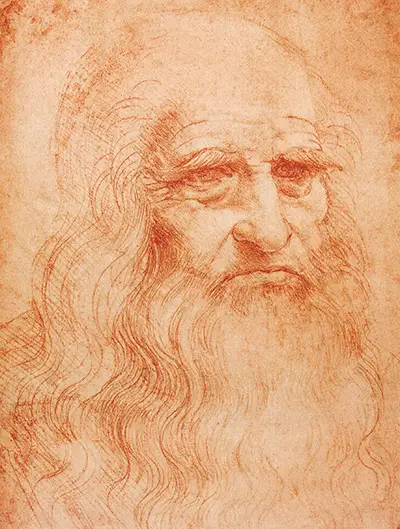He is credited with having invented the parachute, the helicopter and a type of tank.
Some consider him to be the father of architecture, palaeontology and ichnology. As stated before, he is also renown as the one of the greatest painters of all time.
His most famous pieces, including the Mona Lisa as mentioned above, The Last Supper and The Vitruvian Man, are undoubtedly recognized around the world. He truly is a Renaissance man, which is fitting considering he lived during the Renaissance.
Leonardo was born Leonardo di ser Piero da Vinci in 1452 in Vinci, Italy. Da Vinci was not technically his last name because he did not have one as he was born out of wedlock to a peasant named Caterina and a wealthy legal notary named Messer Piero Fruosino di Antonio da Vinci.
His name meant "Leonardo, the son of Piero from Vinci". Leonardo grew up in his mother's household in Vinci; otherwise, little is known of his childhood. When he was a teenager, he apprenticed as a studio boy to Andrea di Cioni, an artist, and Andrea del Verrocchio, a sculptor, in Florence.
Here, Leonardo was exposed to various technical and artistic skills, including chemistry, metallurgy, carpentry, drawing, painting and sculpting. By the age of twenty, Leonardo was qualified as a master in the Guild of Saint Luke and was given a workshop by his father.
In 1482, Leonardo was sent to Milan, Italy, to give a silver lyre as a peace offering, one of his creations, to the Duke of Milan on behalf of Lorenzo de'Medici. This is where his professional career began to soar.
He was soon afterwards commissioned to create two paintings, Virgin on the Rocks and The Last Supper for local religious establishments. Da Vinci also continued to complete commissioned projects for Ludovico, including a bronze statue of a horse.
However, Leonardo had to flee Milan and head to Venice after Ludovico was overthrown in the Second Italian War in 1499, where he worked as an engineer and architect for the military. He returned to Florence the next year, where he created the much-adored The Virgin and Child with St. Anne and St. John the Baptist.
Leonardo then travelled throughout Italy with Cesare Borgia, his patron, and son of Pope Alexander VI, again as a military architect and engineer from 1502-1503. In Cesare's employ, Leonardo created numerous maps that were very accurate and helpful.
They were a new concept at the time and would influence later map creation. Afterwards, Leonardo returned to Florence and rejoined the Guild of Saint Luke, where he spent two years painting The Battle of Anghiari alongside Michelangelo and his companion piece, The Battle of Cascina. These murals were for the Signoria della Chiesa.
Leonardo returned to Milan for a short time to work with some fellow artists before his father passed away in 1504, causing him to return to Florence to sort out his father's estate.
A few years later, da Vinci found himself living in the Belvedere in the Vatican in Rome, where he was able to work alongside Michelangelo and Raphael. He was then hired by King Francis I of France, who recaptured Milan.
Leonardo and Francis I became good friends and Leonardo was allowed to live at Clos Luce, a house near the king's residence at the royal Chateau d'Amboise in France, with another apprentice, Count Francesco Melzi.
It is here that Leonardo would spend the last years of his life. Melzi inherited Leonardo's estate, which included money, paintings, books, tools and personal items. Leonardo was buried on the grounds of the Chateau d'Amboise in the Chapel of Saint-Hubert in 1519.
Despite having passed away around half of a century ago, Leonardo da Vinci has never truly disappeared. The likes of Rembrandt have been inspired by his work.
It is unlikely he ever will. His life has been the subject of many novels, films and studies, although sometimes satirized, exaggerated or fictionalized.
As mentioned before, his artwork is immortal and his range of talents and knowledge is exceptional. There is no doubt that interest in his works will continue, and that is no exception to his portrait from 1512.


